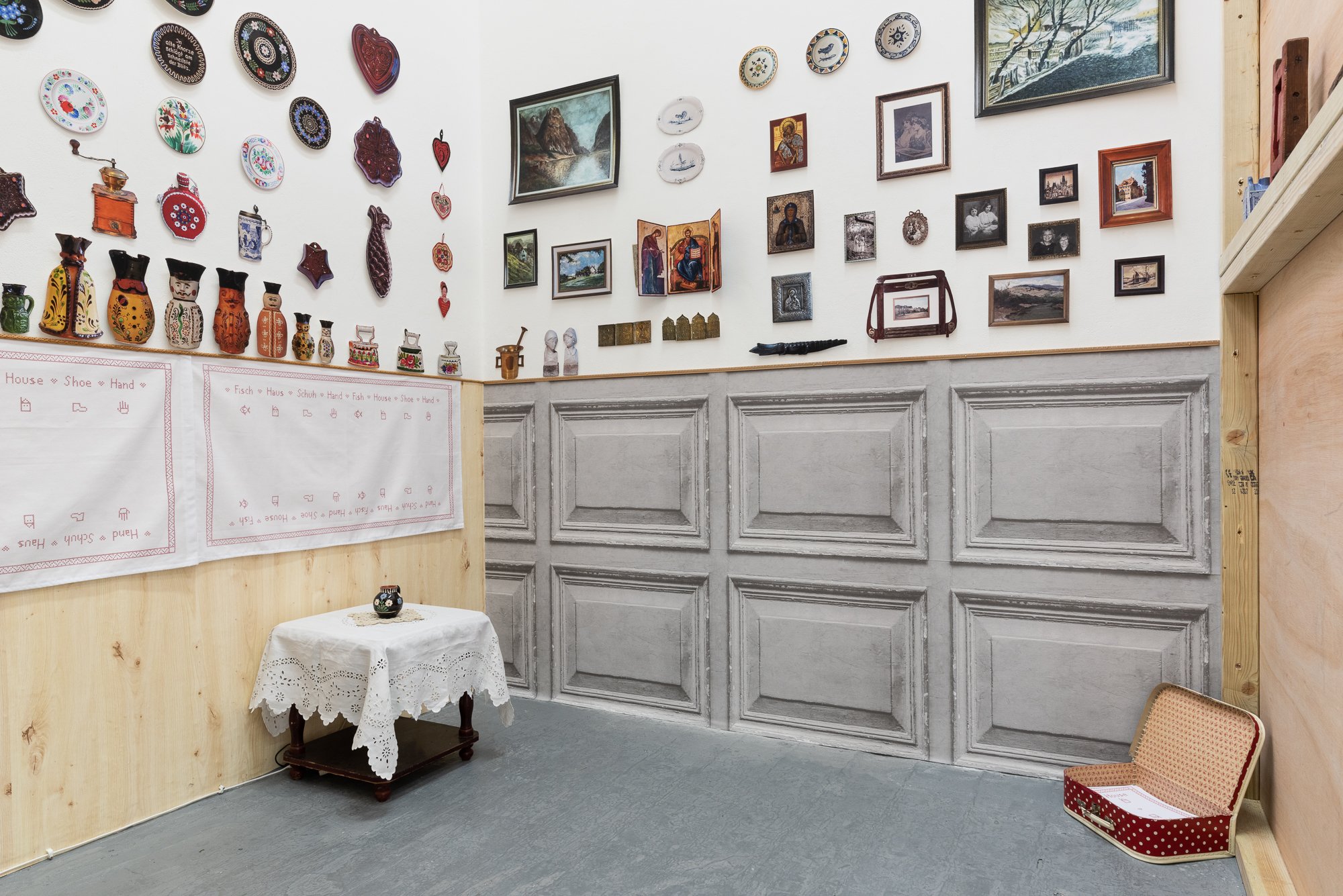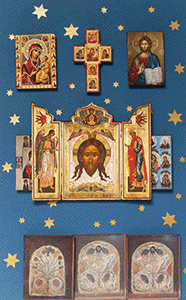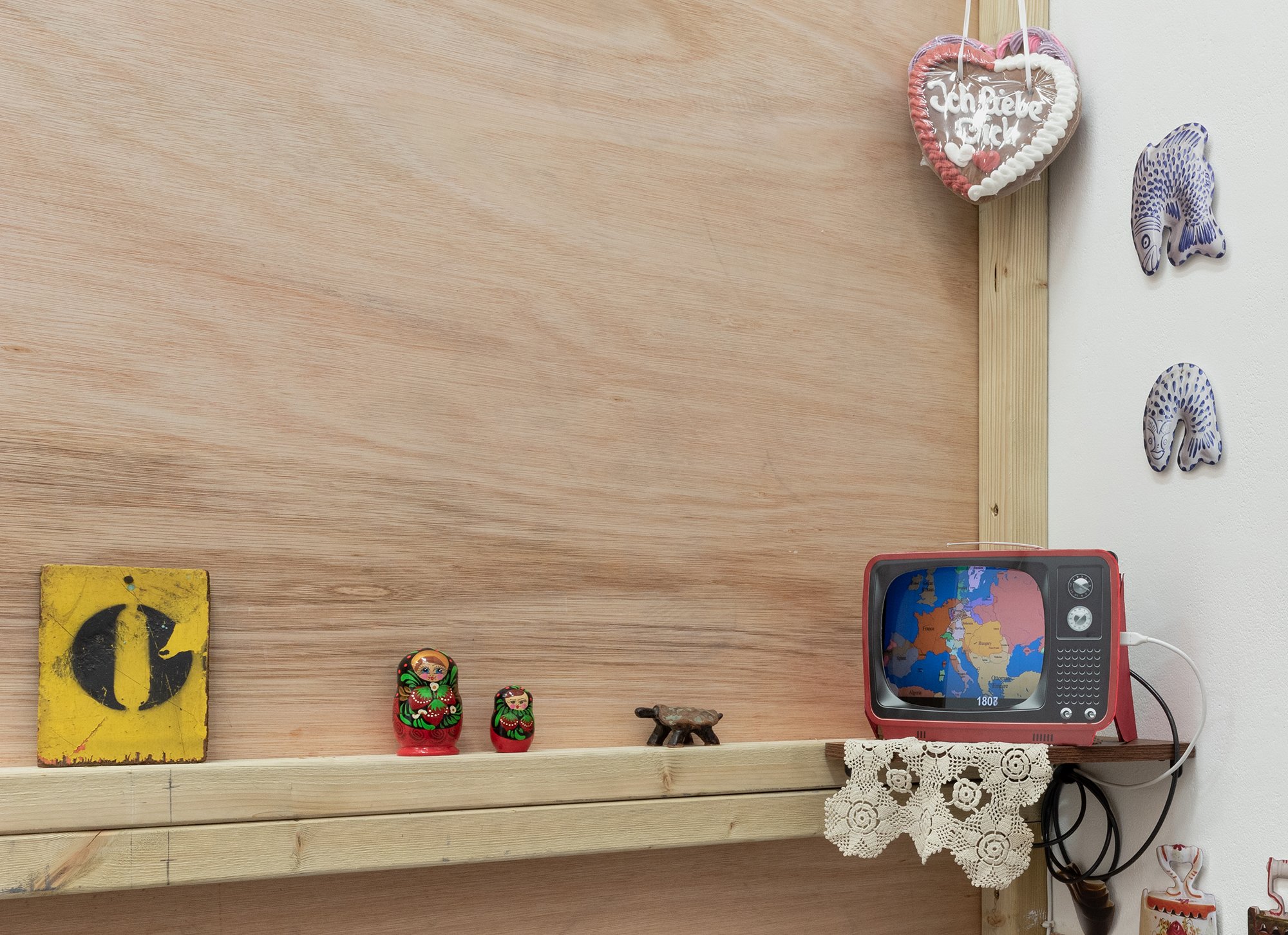Home
(click on the image to enlarge and view all seven images)
The installation provides a glimpse into an immersive experience, inviting viewers to navigate through personal and collective memories associated with the notion of home. As you walk through the interior, you may be familiar with some of the elements, resonating with what it means to belong.
photography by Py Lam
With the narrow passage between the two tower blocks, I sought to reconstruct my childhood memory, where together with my grandmother, I used the gap as a shortcut to walk from one place to another. The slightly smaller-than-life housing estate within the installation alludes to the peculiar way children distort the scale of their surroundings in recollection.
Upon entering the portal, you enter a rich interior that draws inspiration from my parents’ eclectic collection of folklore, ceramics, paintings, religious icons, and family photographs, combined with tangible objects from my personal collection.
photography by Py Lam
The multilayered installation serves as a visual exploration of the complexity of a transcultural identity through the lens of architecture, language, and personal collections. While rooted in a self-referential narrative, the installation goes beyond individual experience, touching upon universal themes such as migration, the quest for a sense of belonging and the significance of personal collections. This combination creates a space where the personal and the universal converge, inviting viewers to reflect on their connections to identity and heritage.
Kitchen
Rather than presenting the actual objects, the installation features life-size photographs mounted on foam board. These images serve as a deceptive representation of the real, highlighting the relationship between objects and identity, with identity understood as an ever-shifting construct.
Home, Kitchen (detail) (click on the image to enlarge)
photographs mounted on foam, wallpaper, table, table cloth, ceramic jug, looped video shown on a tablet encased in a 2D TV, screenprint on two sheets of fabric, gingerbread-hearts.
photography by Py Lam
Hand, Shoe, House, Fish, Hand, Schuh, Hause, Fisch
The interior is divided into three rooms, with one of the walls, portraying my parents' rustic kitchen decorated with a ceramic collection from Hungary, Slovakia, Germany, Austria, Spain, and Italy. In addition to the objects, two fabric wall hangings showcase screen-printed cross-stitch patterns featuring words identical in English and German such as "hand," "shoe," "house," and "fish."
Hand, Schuh, Haus, Fisch, Hand, Shoe, House, Fish, cross-stitch design 2023 (click on the image to enlarge)
screenprint on fabric and Somerset paper 100 x 60 cm
Displaced
Born into a cross-cultural household, my family emigrated to several countries across Central Europe before I settled in London in the mid-1990s. As a polyglot, I am intrigued by how we perceive the world and communicate across languages. Why the world looks different in other languages. I am curious to uncover connections between architecture, languages, and collections, aiming to delve beneath the surface and unravel the intricacies of one's identity across its many layers.
In the corner, a tablet is enclosed in a red retro TV, nearly identical to the one from my childhood. The looped video by Young Europeans presents a timelapse depicting "How 1000 years of European Borders Change." This serves as a compelling reminder of European history, illustrating the dynamic evolution of its borders over time. The video encapsulates the complexities and absurdities inherent in the ever-changing nationalities, migration, and displacement, offering an insight into transcultural identities.
Living Room
Home, Living Room (detail) (click on the image to enlarge)
photographs mounted on foam, mirror, wallpaper
photography by Py Lam
This wall is a homage to my parents' living room, displaying an assortment of landscape paintings, Byzantine icons, family photographs, and small sculptures. Faced with the prospect of losing the original paintings to state confiscation following our escape, my father, a talented painter, took matters into his own hands. He painstakingly replicated the paintings and hung the copies on the wall, while the originals were carefully rolled up and entrusted to a relative.
Icons
(click on the image to enlarge)
The triptych features a photograph of an icon painted by my father, with the reverse side displaying an image in the style of Socialist Realism.
Home, Living room, (detail)
photographs mounted on foam, mirror
photography by Py Lam
(an animation depicting a religious icon transforming into a Socialist Realist painting.)
Upon closer examination, a socialist realist painting, also painted by my father in our kitchen-turned-studio, can be discerned on the reverse side of the icon. This socialist painting cleverly served as a decoy in the event of an unexpected visit by the secret police. Swiftly turned, the icon would reveal its alternate side showing the socialist realism, offering a strategic cover during times of surveillance.
Sisters and Places
Home, Living Room (detail) (click on the image to enlarge)
photographs mounted on foam, wallpaper
photography by Py Lam
The family photographs pay tribute to the sisters, featuring both my great-grandmothers with their sisters, one of which is a drawing by my great-grandfather. Additionally, threre is a photo of my mother’s sisters and a childhood photo which captures my sister and me playing fairies in my grandparents' garden.
Several paintings evoke memories of my upbringing, including depictions of the Technical University, where my father studied engineering, or a painting of a neighbourhood from my childhood’s town. The images also includes a Hungarian landscape and a quaint cottage reminiscent of the one we left behind. Additionally, landmarks such as Prague’s gothic towers and Dürer’s house in Nürnberg, where I resided before moving to London, are part of the collection.
Knickknacks
(click on the image to enlarge)
On the opposite bare walls, I've arranged my assortment of knickknacks: ceramic salt and pepper shakers shaped like Amsterdam’s townhouses, a plastic owl, matryoshka dolls, a clay turtle, a red wooden structure with a small 'E', an Oaxacan wooden lizard, a yellow ‘O’, a Ganesha snow-globe on a mini-Euro-pallet, a fake cheese, a Trabant matchbox car, a camera, and a couple of gingerbread hearts. These seemingly arbitrary objects, collected over the years, brim with memories and anecdotes, serving as fragmentary reflections of my identity. With my collection, I am exploring the relationships between objects, memories, and identity within the narratives we construct—what we choose to reveal and what we opt to conceal.
Part of the immersive experience is also the soundpiece called Doppelgänger.
















